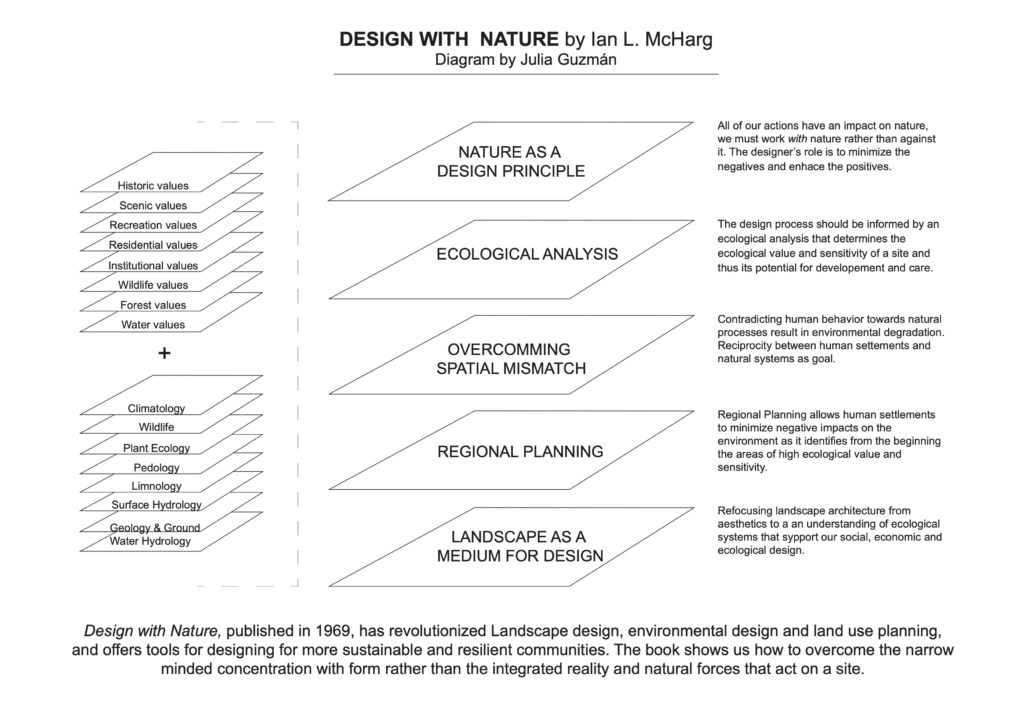
Design with Nature by Ian McHarg is a seminal book published in 1969 that revolutionized the field of landscape architecture and urban planning. The book argues that the natural environment should be the primary consideration in any design process, and that the best designs are those that work with, rather than against, nature.
McHarg begins by outlining the historical trends that have led to the degradation of the environment, including industrialization, urbanization, and the widespread use of pesticides and other chemicals. He argues that this degradation can be reversed through a process of ecological planning, which takes into account the complex interactions between human activities and the natural world.
McHarg proposes a method of design that he calls “ecological regionalization,” which involves mapping the natural features of a region and using that information to guide the design process. He advocates for a holistic approach to design that considers not only the immediate needs of a project, but also its long-term impact on the environment and the surrounding ecosystem.
One of the key concepts in Design with Nature is the idea of “overlay,” which involves layering different maps to create a comprehensive picture of a region’s natural features. By overlaying maps of topography, geology, hydrology, vegetation, and other factors, designers can gain a more nuanced understanding of the natural environment and use that knowledge to inform their designs.
McHarg also emphasizes the importance of collaboration between designers and scientists in the design process. He argues that designers must have a deep understanding of the scientific principles that govern the natural world, and that scientists must be able to communicate their findings in a way that is accessible to designers.
Throughout the book, McHarg provides numerous case studies to illustrate his concepts in action. These range from small-scale projects like parks and gardens to large-scale regional planning efforts. In each case, McHarg shows how a careful consideration of the natural environment can lead to more sustainable and aesthetically pleasing designs.
Overall, Design with Nature is a groundbreaking work that has had a profound impact on the field of landscape architecture and urban planning. Its emphasis on ecological planning and collaborative design processes has influenced generations of designers and planners, and its insights remain just as relevant today as they were when the book was first published over 50 years ago.

